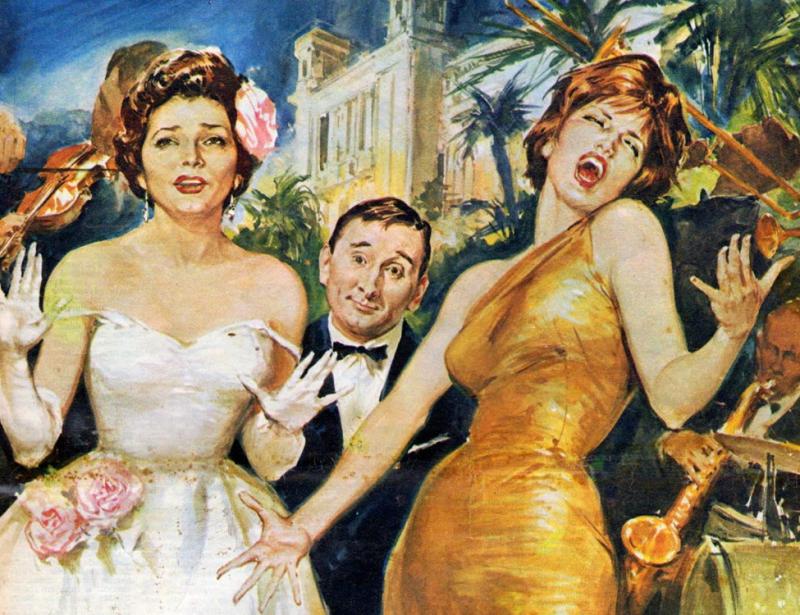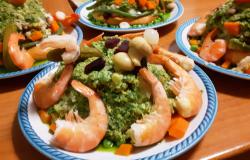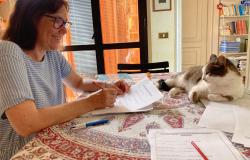With the Sanremo Music Festival under way, this week is dedicated to the celebration of Italian music. Today we begin a new series on the history of pop and rock music in Italy, starting with the opening musical possibilities in the 1950s.
Today, rock and pop music is everywhere. On stereos. In shops. In bars. In restaurants. It's even possible to go for a walk in the country with the latest chart sounds ringing in your ears thanks to the handy inventions of mp3 players and iPods.
It wasn't always that way though. Back in the day, pop and rock music weren't so readily available. If you wanted to buy a particular song, you would have had to have headed down to the local record shop to snap up a vinyl copy – whereas today, the majority of songs are available at the press of a button on a computer. And taking a walk with the latest songs playing couldn't be done. Walking down the street with a great big record player hanging round your neck (complete with great big clunky Cyberman headphones) wasn't really practical.
Which is why the burgeoning of the pop and rock scene felt like something special. It was something new. Exciting. And not something that could be tapped into at the press of a button. The pop and rock scene started to flourish in the 1950s, as rock and pop charts were introduced all over the world to rate what records the public were buying. It was this decade that saw the definition of rock and pop as we know it started to really flourish.
In Italy, the 1950s saw the dawn of a radical shift in the types of music available. After the Second World War had ended, like all other countries, Italy was looking to the future. The economy was starting to build, but to add further fuel, it made sense to tap the potential of entertainment areas such as film, literature and, of course, music. One such initiative would be the introduction of an annual festival. Piero Bussetti, administrator of Sanremo Casino, and conductor Giulio Razzi began to lay plans for a possible music festival in the early 1950s. Sure enough, these plans came to fruition in the winter of 1951, when the first Sanremo Music Festival began. Debuting on 29th and 30th January 1951, the Sanremo Music Festival showcased Italian music talent in the form of a contest. For the first Festival, 20 songs would be performed by only three singers. The amount of acts would greatly increase in the future, as would its global reputation. Ironically, it was the contender to the radio that would bring even greater prominence to the Sanremo Music Festival: the television. From 1955, the Sanremo Music Festival was broadcast on the Programma Nazionale channel. The final night could be seen in countries such as France, Germany and Switzerland. Today, it's bigger and even more popular than ever before.
What really counted was that it gave centre stage to a great number of talented singers. Carla Boni, for example, won the contest in 1953 with Flo Sandon's for the song Viale d'autunno. She went on to have a successful career, including a win at Festival di Napoli in 1955 with her husband Gino Latilla. She enjoyed chart success with the likes of La Casetta in Canada and the popular standard Mambo Italiano. Her 1953 co-winner, Flo Sandon's (the name came from an accidental misprint) also struck gold with songs such as El negro Zumbon and T'ho voluto ben. One of the most successful winners of the festival was tenor Claudio Villa, who not only won the competition four times (between 1955 and 1967), but recorded more than 3000 songs with 45 million records sold.
Singers were clearly proving popular in the 1950s, and the growth in televised music programmes was allowing more people to listen and buy the records as a result. The global phenomenon of The Eurovision Song Contest arrived in 1956, with Italy competing in the worldwide competition. In Italy, another Rai 1 programme promoted the burgeoning Italian music scene. Canzonissima began broadcasting from 1958. It combined music with variety, comedy and dancing, and ran for 10 years (albeit with a hiatus between editions as a result of satirical sketches which were considered a little too near the knuckle at the time).
One of the styles showcased and one that was to prove highly popular in the 1950s was that of Canzone Napoletana. This was a traditional style of music which was sung in Neapolitan, taking such forms as a lover's lament or serenade. The likes of Mario Lanza and Renato Carosone took this style of music and made it massively popular. Carosone managed worldwide success with his music, going all the way to number one in America, for example, with Torero.
Many other outside influences were having a bearing on Italian music in the 1950s. With swing and jazz creeping into the mix, there was also room for overseas influences. America, for example, was to have some influence on acts such as Fred Buscaglione. Buscaglione adopted the look of an American gangster, the sort seen in mobster movies. In tune with this cultivated image, Buscaglione sang songs of drama, discussing women, gangsters and action. This approach proved popular with million selling records such as Che Bambola, Guarda che luna and Teresa non sparare. Tragically, Buscaglione was killed in a motor accident in Rome in 1960.
The tail end of the 1950s saw some significantly new genres coming through. The Italian cantautore (singer-songwriter) was starting to be made popular, thanks to the likes of Domenico Modugno, one of the first examples. One of the songs performed by Modugno at the Sanremo Festival went on to be a huge smash – Nel blu dipinto di blu (Volare) became one of the most talked about records in Italy in 1958, and went on to score acclaim and big sales overseas.
Arguably the biggest shift in musical styles came from rock and roll in the 1950s. The likes of Elvis Presley, Chuck Berry and Little Richard made their mark rapidly, and this influenced a number of Italian performers. The Italian Elvis made an impression – Little Tony (born Antonio Ciacci) formed a band with his brothers Alberto and Enrico. Little Tony secured a record deal, and this resulted in hits like I Can't Help It.
The Queen Of Screamers was also about to let rip. An impromptu performance on holiday led to a long-standing career for singer Mina. This performance led to being on stage before 2500 people in September 1958 with her recently formed band The Happy Boys. Following this show, Mina recorded her first singles, Non Partir/Malatia and Be Bop A Lula/When. Her live reputation began to flourish. After her original band dissolved, her new band Solitari added solid support to performances that were receiving considerable critical acclaim. Her first Italian Number One, Tintarella di Luna boosted her flourishing career, which was set to continue for decades to come.
Even in other countries, rock and roll performers had Italian roots. The Mystics, for example, included band members such as Phil Cracolici. Their song Hushabye, hit the charts in 1959. So too did A Teenager In Love, a smash for Dion DiMucci, who along with his band The Belmonts would garner further chart success with the likes of Runaround Sue and The Wanderer.
The 1950s had proven to be a diverse and interesting decade for Italian music. It explored other musical possibilities to broaden its palette into new musical styles and genres such as rock and roll and the singer songwriter. It was in the next decade that these musical styles would be built upon and extended – not to mention an even greater growth in future music stars and bands. The Swinging Sixties were waiting in the wings...








